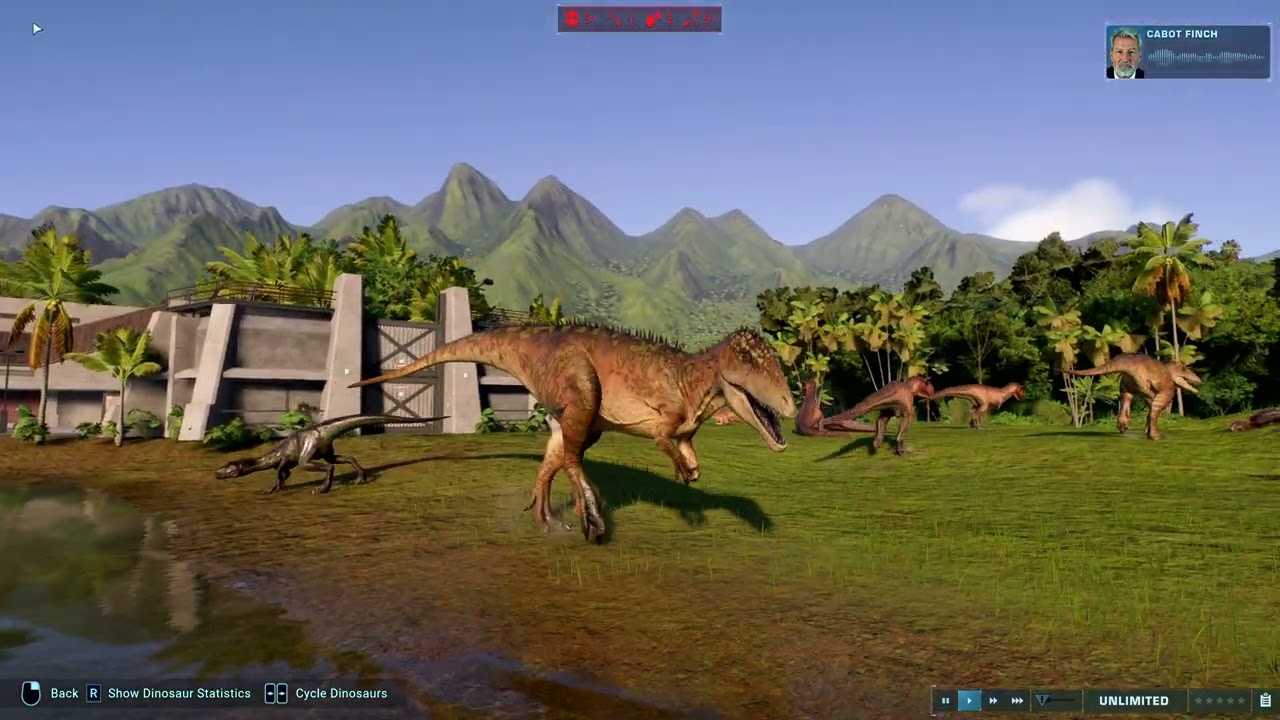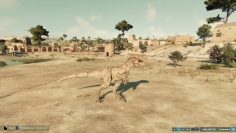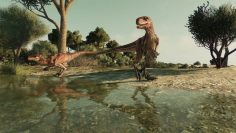Carcharodontosaurus Jurassic World Evolution 2
Carcharodontosaurus /ˌkɑːrkəroʊˌdɒntoʊˈsɔːrəs/ is a genus of large carcharodontosaurid theropod dinosaur that existed during the Cenomanian age of the Late Cretaceous in Northern Africa. It is currently known to include two species: C. saharicus and C. iguidensis, which are among the largest theropods, nearly as large as or even larger than Tyrannosaurus, Giganotosaurus, and Spinosaurus.
The genus Carcharodontosaurus is named after the shark genus Carcharodon,[1] itself composed of the Greek karchar[os] (κάρχαρος, meaning “jagged” or “sharp”) and odōn (ὀδών, “teeth”), and the suffix -saurus (“lizard”). (“Shark lizard”).
Carcharodontosaurus includes some of the longest and heaviest known carnivorous dinosaurs, with various scientists proposing length estimates for the species C. saharicus ranging between 12 and 13.7 meters (39 and 45 ft) and weight estimates between 6.2 to 15.1 metric tons (6.8 to 16.6 short tons).[8][9][10][11] In 2016, Gregory S. Paul estimated C. saharicus at 12 meters (39 ft) in length and 6 metric tons (6.6 short tons) in body mass, while C. iguidensis at 10 meters (33 ft) in length and 4 metric tons (4.4 short tons) in body mass.[12] In the same year, Molina-Pérez & Larramendi gave a length of 12.8 meters (42 ft) and a weight of 7.8 metric tons (8.6 short tons) for the neotype of C. saharicus, and a length of 11 meters (36 ft) and a weight of 5.2 metric tons (5.7 short tons) for a referred tooth of C. iguidensis.[13]
Carcharodontosaurus were carnivores, with enormous jaws and long, serrated teeth up to eight inches long. A skull length of about 1.42–1.6 m (4.7–5.2 ft) has been restored for the neotype of C. saharicus.[14][9] Currently, the largest-known theropod skull belongs to another huge carcharodontosaurid dinosaur, the closely related Giganotosaurus (with skull length estimates up to 1.95 m (6.4 ft))[15] but this has been disputed.[14]
In 2001, Hans C. E. Larsson published a description of the inner ear and endocranium of Carcharodontosaurus saharicus.[16] Starting from the portion of the brain closest to the tip of the animal’s snout is the forebrain, which is followed by the midbrain. The midbrain is angled downwards at a 45-degree angle and towards the rear of the animal. This is followed by the hindbrain, which is roughly parallel to the forebrain and forms a roughly 40-degree angle with the midbrain.[16] Overall, the brain of C. saharicus would have been similar to that of a related dinosaur, Allosaurus fragilis.[16] Larsson found that the ratio of the cerebrum to the volume of the brain overall in Carcharodontosaurus was typical for a non-avian reptile.[16] Carcharodontosaurus also had a large optic nerve.[16]
The three semicircular canals of the inner ear of Carcharodontosaurus saharicus – when viewed from the side – had a subtriangular outline.[16] This subtriangular inner ear configuration is present in Allosaurus, lizards, turtles, but not in birds.[16] The semi-“circular” canals themselves were actually very linear, which explains the pointed silhouette.[16] In life, the floccular lobe of the brain would have projected into the area surrounded by the semicircular canals, just like in other non-avian theropods, birds, and pterosaurs.[16]
https://en.wikipedia.org/wiki/Carcharodontosaurus
#dinosaurs #Carcharodontosaurus






